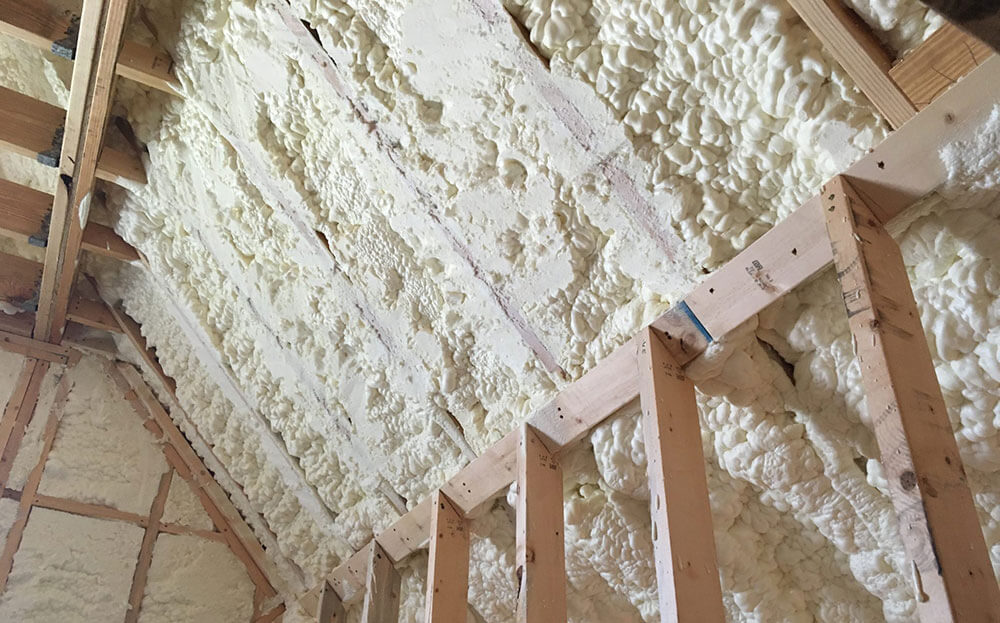How to Choose a Good Supplier of Polyurethane Foam Insulation. Typical Mistakes Made During the Polyurethane Foam Application
How to choose a good supplier of polyurethane foam insulation.
Typical mistakes made during the polyurethane foam application.
House insulation guidance
A Good Supplier of the Polyurethane Foam Spray Insulation. Sanberg Europe.
Choose a reliable and solid supplier of the spray isolation. It will pay off in future.
Deciding which one of the companies offering polyurethane foam spray service to choose, people take a lot of things into consideration, above all the cost of spray per meter. But will the choice based on the price give you what you want? How will you know if the contractor is concerned not only about their profit and not really caring to perform the service properly? Foam spray seems easy, but from the point of someone from the inside, I know what things must be considered to make your investment profitable, rather than being a waste of your hard earned money. Incorrect foam spray results in lack of proper insulation. Mistakes made during the foam choosing, can cause a failure of the whole project.
Serious mistakes made by investors and spray companies:
- Choosing the foam from unknown suppliers. Such foams are often produced outside of Poland and their properties tend to be different than declared by the distributor. In some cases shelf life of the foam is 6 months. It’s important that the foam is fresh and not past its sale-by date. If the distributor imports the foam from, for example, China, then the transport itself often takes about 3 months. We don’t know how long the foam was stored before the spray. I have seen cases where the spray crew was tempted to buy cheep polyurethane foam and when the time for spray arrived, instead of the foam some strange, gelatinous substance fell out of the spray gun and it stiffened without expanding. Sanberg Company recommends Polish Polyurethane Foams, that are available at hand from the factory. I cannot name any specific company as it is not a sponsored article and it is not written to favor anybody.
- No vapor-permeable film in the attic.
- Spray of an inappropriate type of foam, i.e application of closed cell foam in areas, where the open-cell foam applies, and other way around.
- It often happens, that the customer decides for the expensive foam, technical parameters of which are slightly better then those of cheaper foams. Numbers used in the catalogs to specify those parameters, are the numbers supported by the laboratory tests. Often company data on foam parameters do not coincide with what we actually receive. It’s like with a car catalog data. The manufacturer writes that the fuel consumption is 6l/100km, and in fact the car uses 8l/100km.
- Spraying foam on the leaking roofs. Foam is designed for thermal insulation, not for patching holes in the roof.
- Wrong settings of the polyurethane foam spray reactor and incorrect temperature of the foam. Inaccurate proportions of ingredients can also contribute to improper spray. The foam may become brittle and fragile. Such isolation will not do its job.
A good Polyurethane Foam Spray Company. Saving on the spray company does not pay off.
- Company makes savings on the sprayed material. I often observe that the spray company does not cover the rafters with foam. If it’s possible, the wooden elements of the roof should be covered with foam as well. Wood can also let the cold inside.
- Cutting off the foam close to the rafter, when it’s not necessary. If the plasterboards are on the rack, it’s not necessary to cut off the surplus of the foam. The coating forms on the surface of the sprayed foam and it is an additional protection from heat and moisture.
- Spraying the foam on the dirty surface. Spraying crews are very busy during the construction season, as it is limited and doesn’t last the whole year. Unqualified team, due to the lack of time, will not clean the sprayed area from dust, dirt, rust, splotches of oil or of other petroleum derivatives. Foam sprayed on such surfaces will come unstuck with time. A good polyurethane foam spray company will never perform the service if there are no appropriate conditions.
- If the air temperature is too low, polyurethane should not be sprayed. Foam must not be sprayed also on the surfaces covered with frost or ice. The market offers so-called winter polyurethane foams that are applicable for the spray in temperatures reaching up to 0C. Pseudoexpert can persuade the client to spray the inappropriate foam during the winter, but it is not a good choice.
- It’s not advisable to apply polyurethane foam when the air moisture is high.
- Spraying the foam on restricted items, such as electrical and splitter boxes or light elements. For a very important reason the appropriate distance from the light sources must always be kept. Bulbs and other light sources generate heat that with prolonged illumination can accumulate and cause overheating of the light elements in the lamps, and damage them. A Good Polyurethane Foam Spray Company employs professionals who will not let any element of the job to be done inappropriately, and will make sure to provide the perfect service with regard to each important detail.
If you have any doubts regarding the polyurethane insulation, you can always contact with the producer or distributor of the polyurethane foam to clarify all you concerns.















